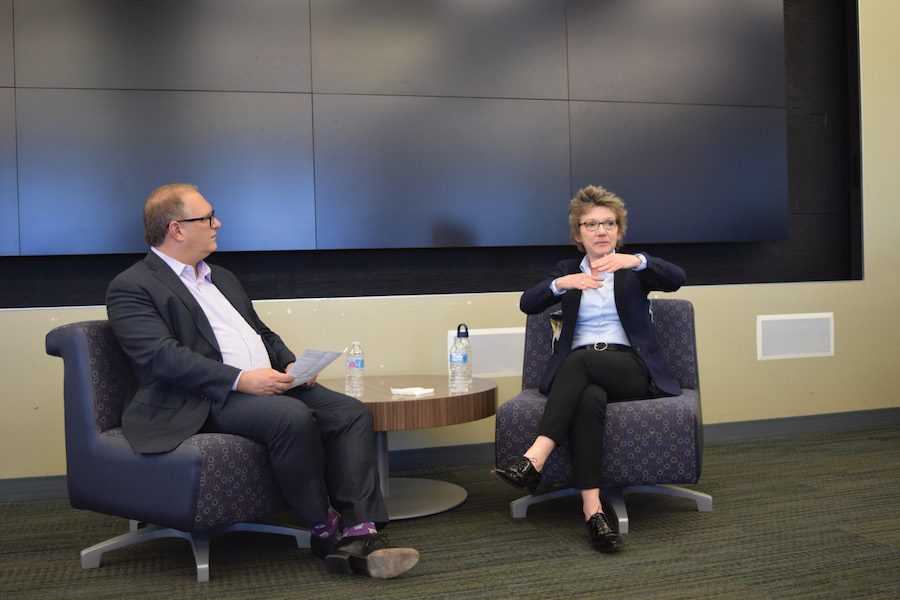President of San Francisco Fed calls for a more inclusive economy
Julie Deardorff/Northwestern School of Education and Social Policy
San Francisco Federal Reserve President Mary Daly and SESP Dean David Figlio. Daly called for a greater investment in education.
May 15, 2019
Speaking to young people as future participants in the economy, Mary Daly asked incoming workers to recognize that non-traditional paths “are actually really valuable.”
“What I find time and time again, is that young people from various backgrounds, they don’t understand how much they have to offer because they’re not exactly down that linear path that they think they should,” Daly, the president and chief executive officer of the Federal Reserve Bank of San Francisco, said Tuesday evening. “So if we could teach young people, all people, that your story, your whole self, the experiences, the lens which you look through — don’t alter that, just participate with it.”
Daly gave her remarks to a crowd of about 25 people in Annenberg Hall in the second of the School of Education and Social Policy’s Nancy and Ray Loeschner Lecture Series. The first-term Fed president, who dropped out of high school before receiving her general education degree, called for an inclusive economy that takes advantage of a diversity of backgrounds.
“It’s not just important to have them around the table, to have optical diversity, we have to have inclusion so they have a voice,” she said. “If we don’t do that then we will not make the best policy.”
The talk was moderated by SESP Dean David Figlio, who asked Daly what that vision looks like in an economy still grappling with the aftermath of the Great Recession. While the recovery from the Great Recession is set to be the longest on record, many workers haven’t reaped the rewards.
Daly pointed to problems that began before 2008 but only added to the impact of the recession, such as an aging population that would hamper economic growth. This reduction in population growth — a contributor to economic growth — makes the recovery “not look as sluggish.” She also said that recoveries after financial crises tend to be different.
Still, she added, that the U.S. has one of the lowest labor force participation rates of prime-age workers among industrialized countries is a problem. Her vision would require addressing structural issues, like bringing in more workers from the sidelines and addressing structural shifts that have depleted jobs for workers without college degrees.
Daly, a labor economist whose research includes income inequality and the black-white wage gap, called for greater investment in education.
“Really, we’re underinvesting in our people,” she said. “We are leaving a lot of talent on the table. One thing I’d like to see us do is improve our investments so that more people can partake in the growth.”
Daly also called for greater racial and gender diversity in the economics profession. She’s been a prominent voice in addressing the field’s “diversity crisis.”
Economics doctoral degrees to non-white students made up only 7.3 percent of those awarded in 2017, according to the American Economic Association. That figure was about 33 percent for women.
The field has made little progress in the past 20 years, Daly said, adding that economists must hold each other “accountable” in addressing and making people aware of microaggressions and other elements that make environments unwelcoming.
An inclusive and welcoming culture, she added, would attract more diverse economists.
“You have to change the culture,” she added. “We want them to be one of us. And I want them to actually change us.”
Email: aperez@u.northwestern.edu
Twitter: @_perezalan_


